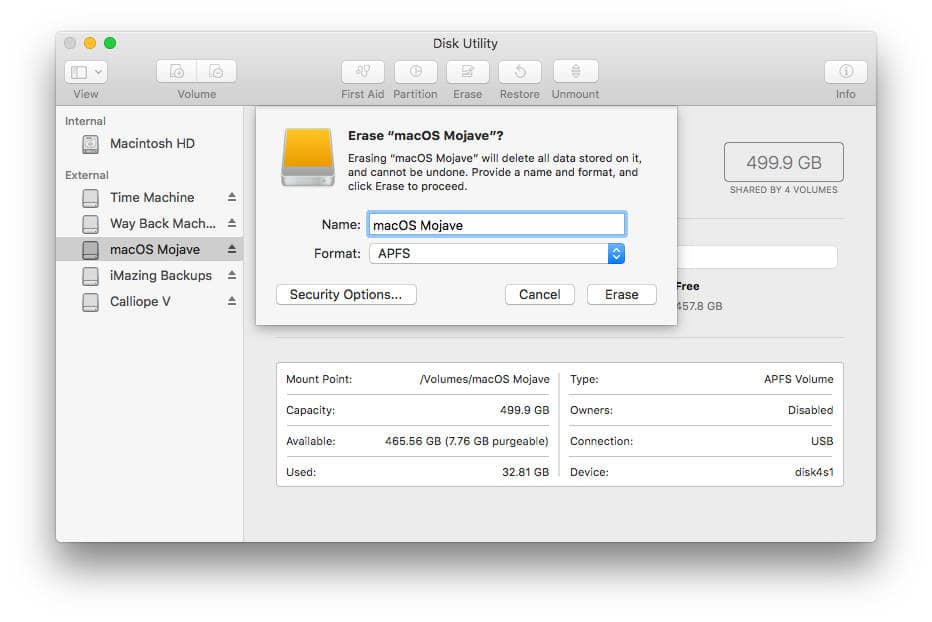

- Download mac utility disk how to#
- Download mac utility disk mac os x#
- Download mac utility disk install#
- Download mac utility disk code#
- Download mac utility disk password#
Run the above fsck command over and over until you see a “** The volume appears to be OK” message. The fsck command may find additional errors after repairing the first batch of errors, so Apple recommends you run the fsck command again if it found and fixed problems. This indicates the fsck command found and fixed problems. If it found problems, you’ll see a “***** FILE SYSTEM WAS MODIFIED *****” message. The command will run through several phases of checks. When it’s done, you’ll see a message saying “** The volume appears to be OK” if everything is fine. Type the following command into the terminal and press Enter to start a file system check: You’ll enter single-user mode, which will provide you with a text-mode terminal. Restart it, and then press and hold the Command+S keys while it boots. To do this, start your Mac in single-user mode. This is the thing you should try last, as Disk Utility in the recovery environment may work better and be more capable. You don’t need to do this if any of the above steps worked. In some cases, even Safe Mode or Disk Utility in OS X Recovery won’t be enough to fix problems. You may need to boot your Mac into single-user mode and run the fsck (file system check) command the old-fashioned way.
Download mac utility disk mac os x#
The Disk Utility interface is the same one you’ll see on your Mac OS X desktop, but run it from here and it’ll be able to repair problems with your system drive. Select the drive or partition you need to repair and click the “First Aid” button. In OS X Recovery, click the “Disk Utility” shortcut to launch the Disk Utility here. (If recovery mode doesn’t appear, restart your Mac and try pressing the keys again.) Your Mac will load straight into recovery mode. You’ll see a progress bar appear, and you can release the keys after you do. Press and hold the “Command+R” keys while it’s booting. Your Mac will be able to fix errors on your system drive from recovery mode. From there, you can use Disk Utility in the same way. The solution is to boot into a special recovery mode. It can’t make changes to that system drive while it’s running from it. This is because it’s running in “live mode” - examining the disk while the operating system is running from it. However, in some cases, your Mac may find disk or file system problems and be unable to repair them when you perform the above steps. Ideally, that should be the end of it - especially if you used the safe mode trick above. RELATED: 8 Mac System Features You Can Access in Recovery Mode When it’s done logging in and you see a desktop, the disk check is done. This will make the login process take longer than normal, so be patient.
Download mac utility disk password#
Sign in with your password and your Mac will then check your disks. To do this, restart your Mac and hold “Shift” while it’s booting. Safe Mode, sometimes called “Safe Boot,” contains an automatic startup check and repair that can fix these problems. One simple way to fix such errors is to boot your Mac into Safe Mode. RELATED: Troubleshoot Your Mac With These Hidden Startup Options
Download mac utility disk code#
An exit code of “0” is a good thing, and means no errors were found. You’ll see messages like “Storage system check exit code is 0” and “File system check exit code is 0” here. You can click the “Show Details” drop-down message to view detailed information about any errors it encounters. If it finds any errors, it will attempt to automatically fix them for you. It depends which you select in the sidebar.Ĭlick “Run” and your Mac will check the disk you selected for errors. For some older Macs this won't necessarily be the latest OS, such as MacOS Monterey, but instead MacOS Catalina, for example.You can either run the First Aid function on an entire disk, or an individual partition on that disk.
Download mac utility disk install#
Your computer should then install the latest version of OS that it can install. Re-install MacOSX: click on " Reinstall Mac OS X" > "Continue".Select the Mac OS Extended (Journaled), give a name to your disk and click on Erase.Select the startup disk and go to the Erase Tab.Select " Disk Utility" and click on Continue.Turn your Mac on, while holding the CMD + R keys down.Also, it is advised to make a time machine back up of your computer if possible before following the procedure. To reinstall your Mac's OS without an installation disc you need to firstly make sure that you keep your Mac turned on during the whole procedure, and that your Mac is connected to the internet.
Download mac utility disk how to#
In this article we will show you how to reinstall Mac OS without disc. MacOS includes a recovery partition that allows you to easily erase all data on your Mac and reinstall your OS without an installation disc.


 0 kommentar(er)
0 kommentar(er)
